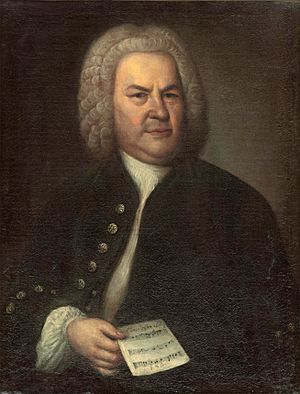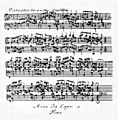Goldberg Variations facts for kids
The Goldberg Variations, BWV 988 is a famous piece of music for keyboard instruments. It was written by the German composer Johann Sebastian Bach around 1741. This amazing work includes a main tune, called an aria, and then thirty different versions of it, called variations.
Contents
What are the Goldberg Variations?
This piece starts with a beautiful slow tune, the aria. Bach probably based this tune on an old French dance song. After the aria, you hear thirty unique variations. Each variation changes the original tune in a new and exciting way. But they all share the same basic musical ideas and structure.
The Story Behind the Music
People believe the Goldberg Variations were written for a special reason. A young musician named J. G. Goldberg was a student of Bach. Goldberg was a very skilled player, known as a virtuoso. He worked for a rich count named Count Keyserlingk. The count had trouble sleeping, so he asked Goldberg to play music for him at night. The Goldberg Variations were supposedly written to help the count fall asleep.
The Music's Structure
The Goldberg Variations are built around the same basic musical ideas. Even though each of the thirty variations sounds different, they all use the same underlying harmonies (the way notes fit together) and structure as the first aria. This makes the whole piece feel connected.
The work ends with a fun part called a quodlibet. A quodlibet is a humorous mix of two or more popular tunes played at the same time. It's like a musical joke!
Playing the Goldberg Variations
Today, the Goldberg Variations are played on different instruments. They are often performed on the harpsichord, which is the instrument Bach would have used. They are also very popular to play on the piano. Many musicians and listeners find this work to be beautiful and complex. It shows Bach's incredible skill and imagination in music.
Images for kids
See also
 In Spanish: Variaciones Goldberg, BWV 988 para niños
In Spanish: Variaciones Goldberg, BWV 988 para niños





